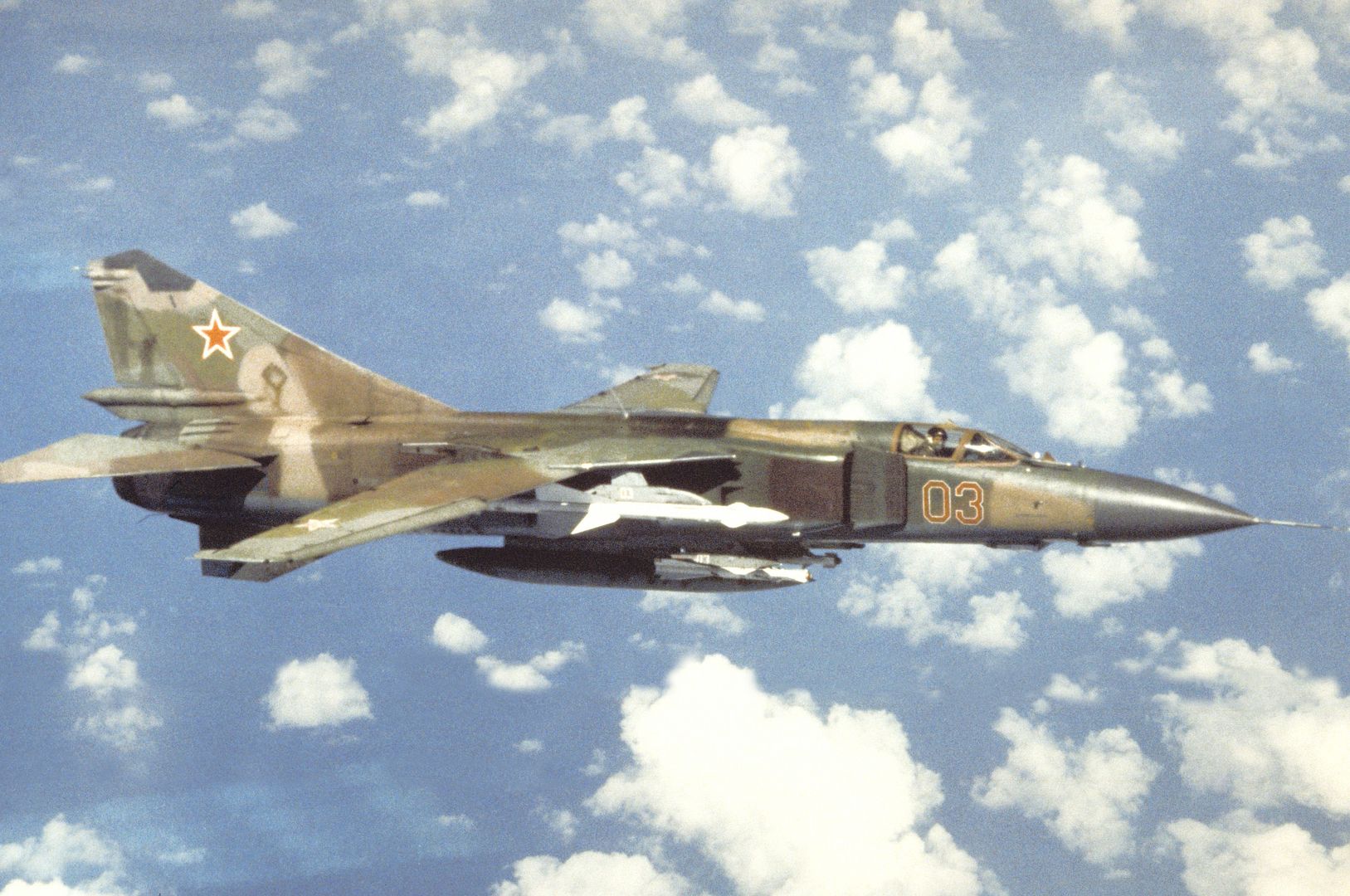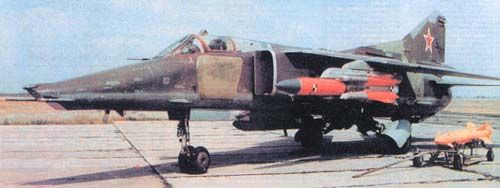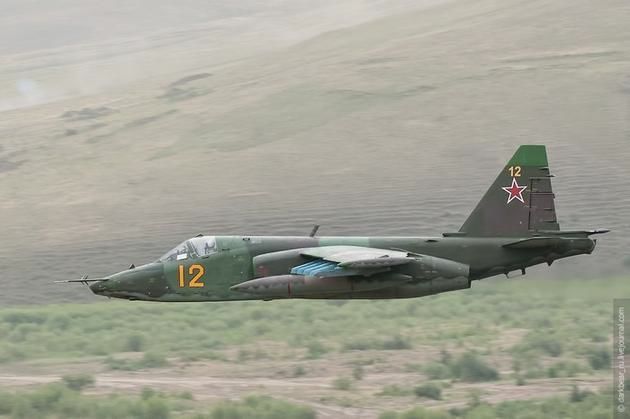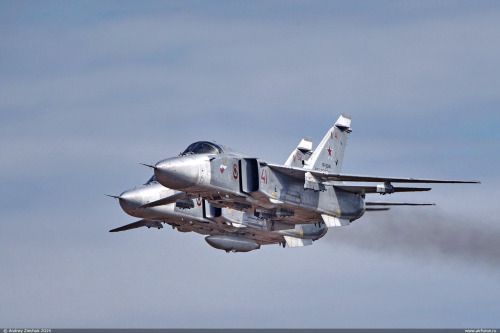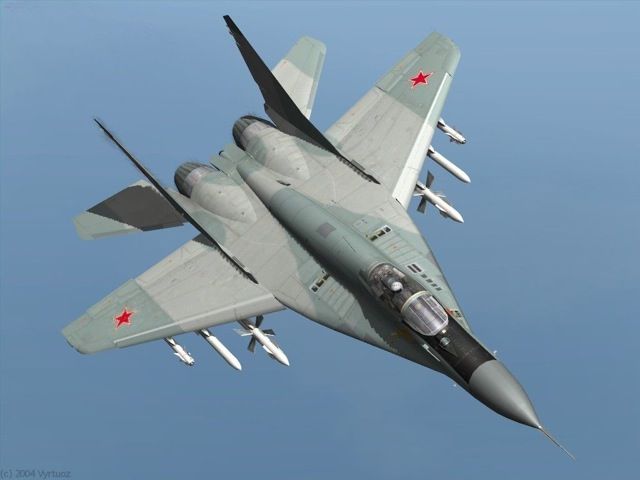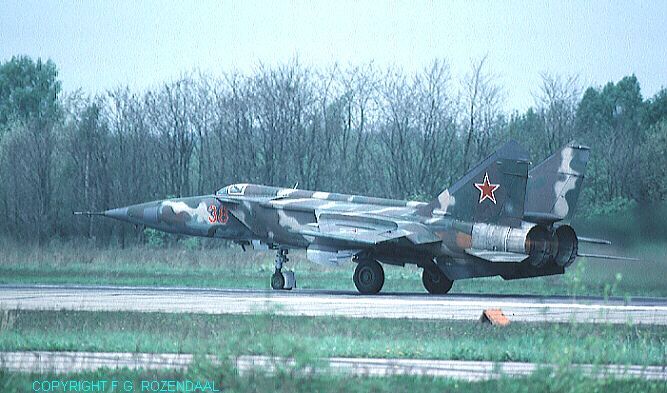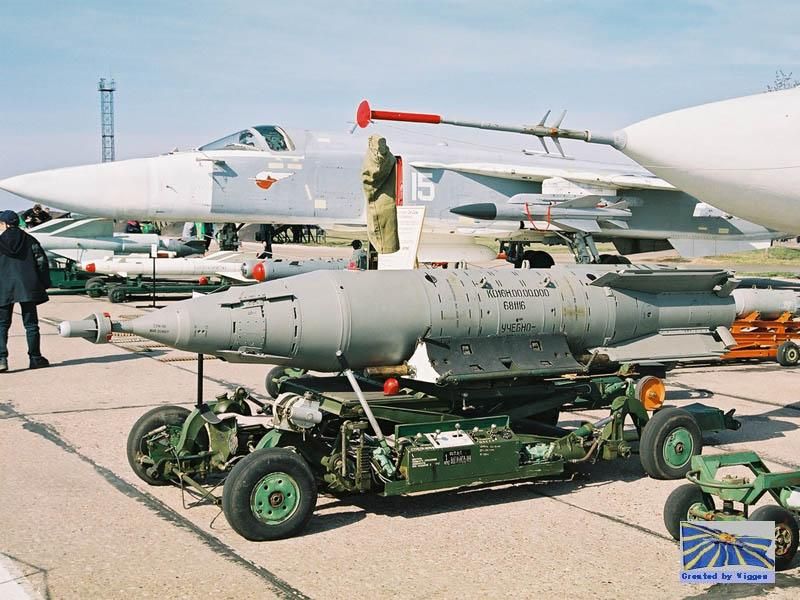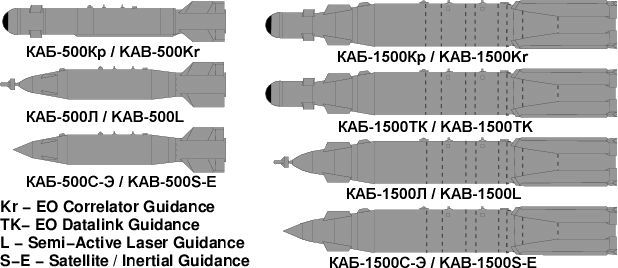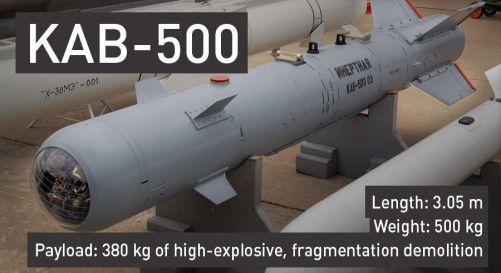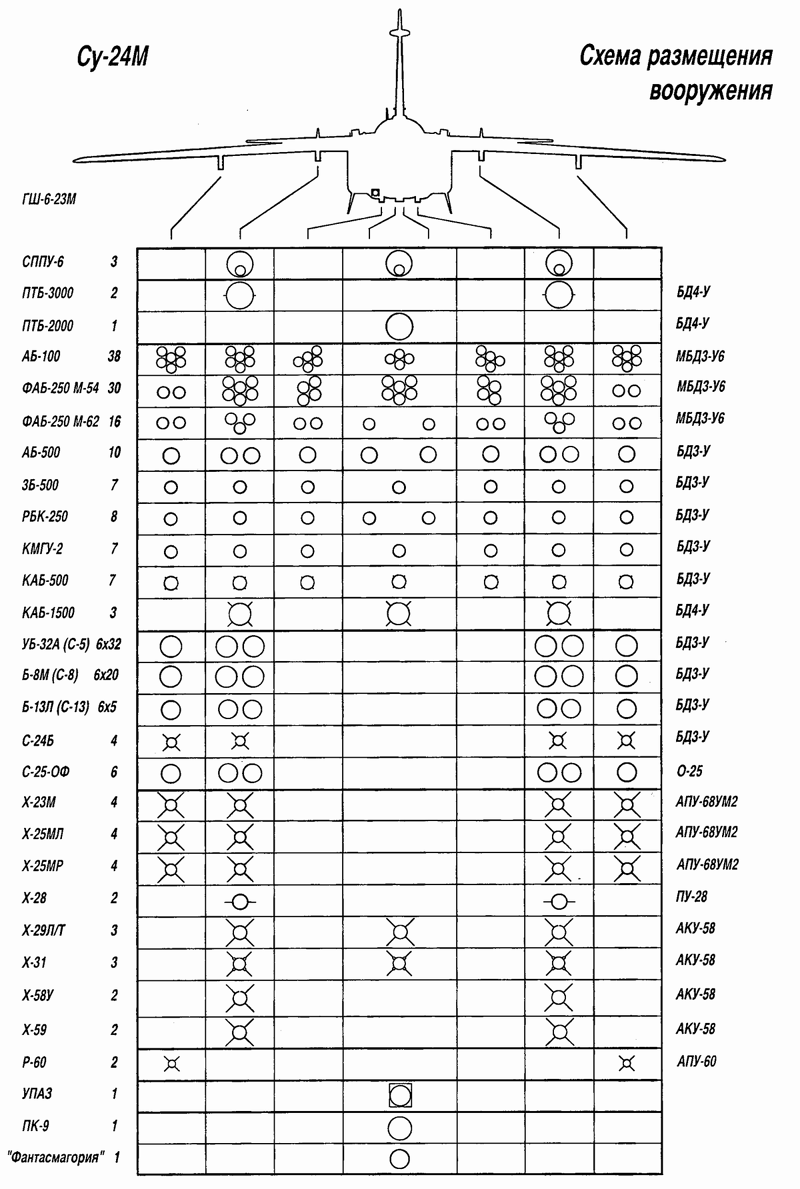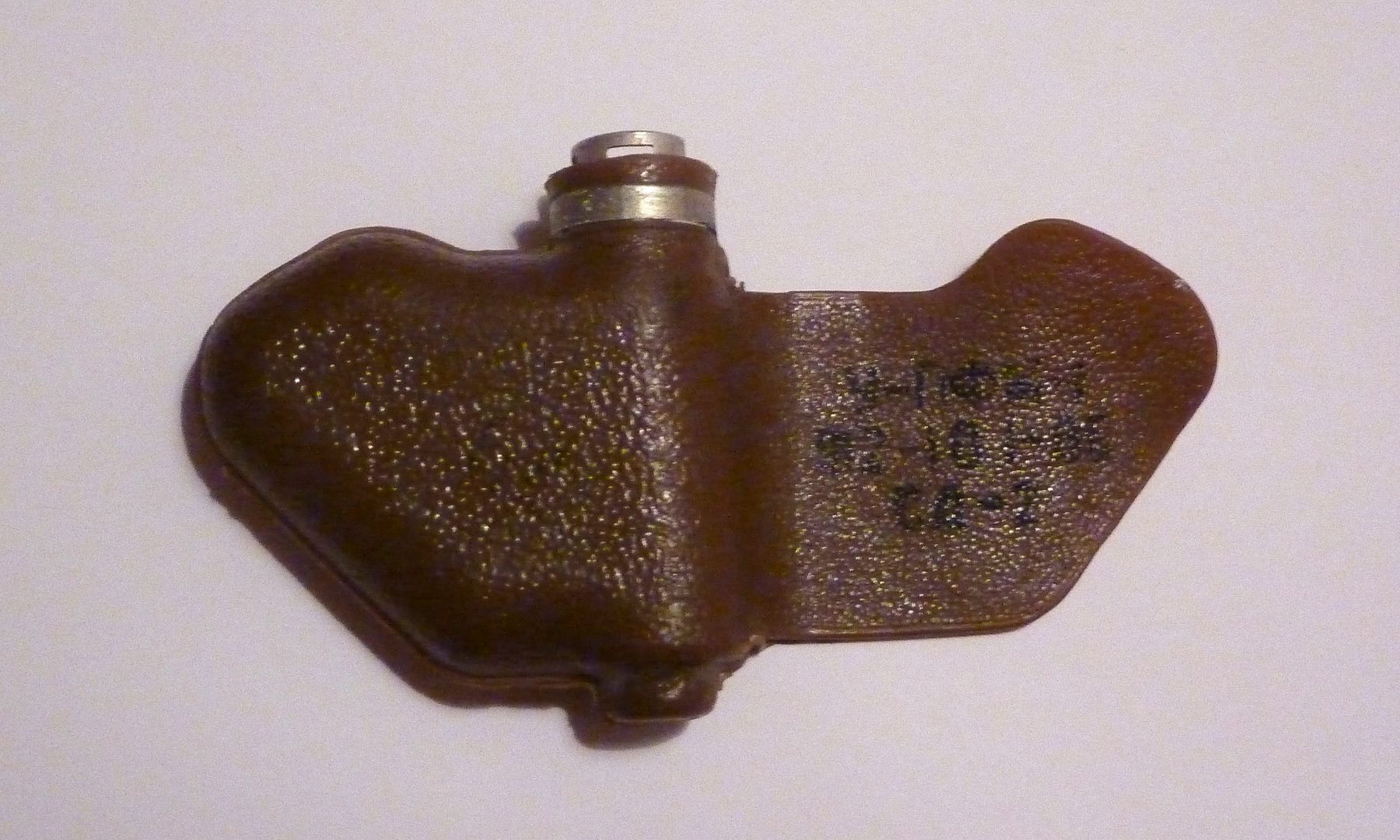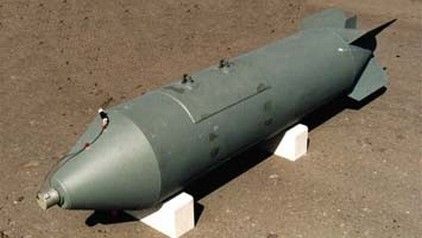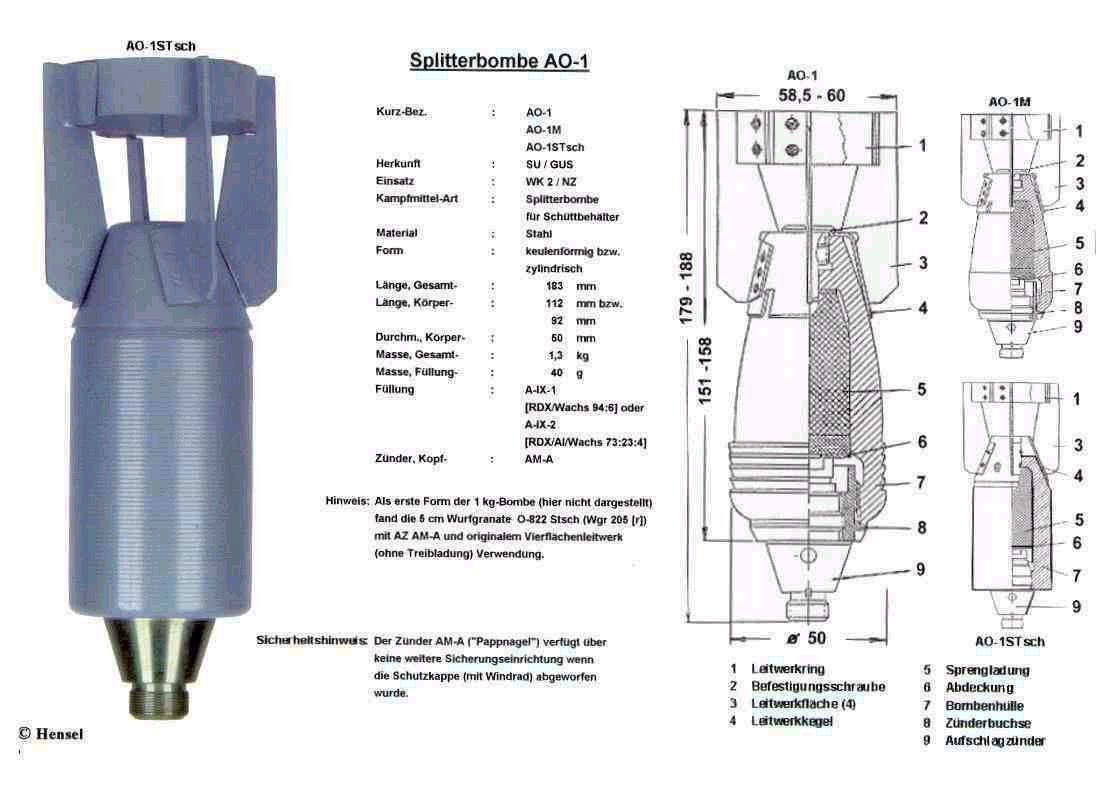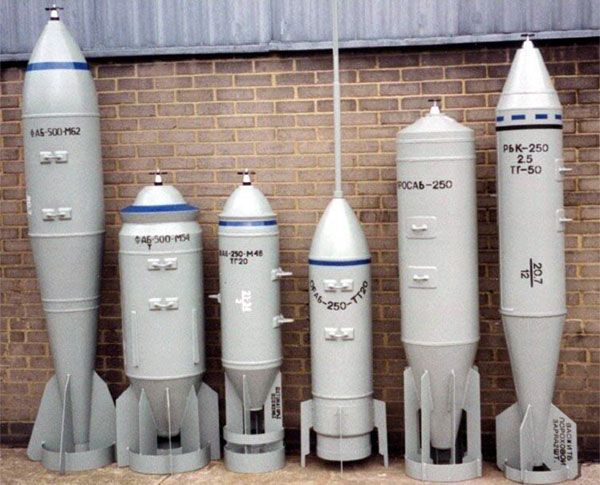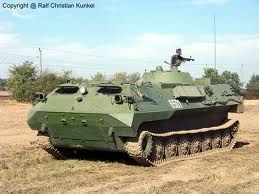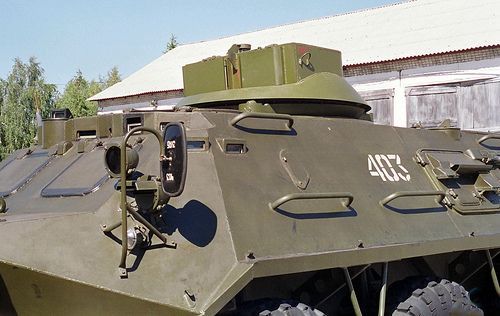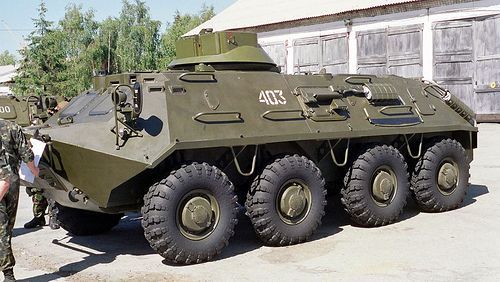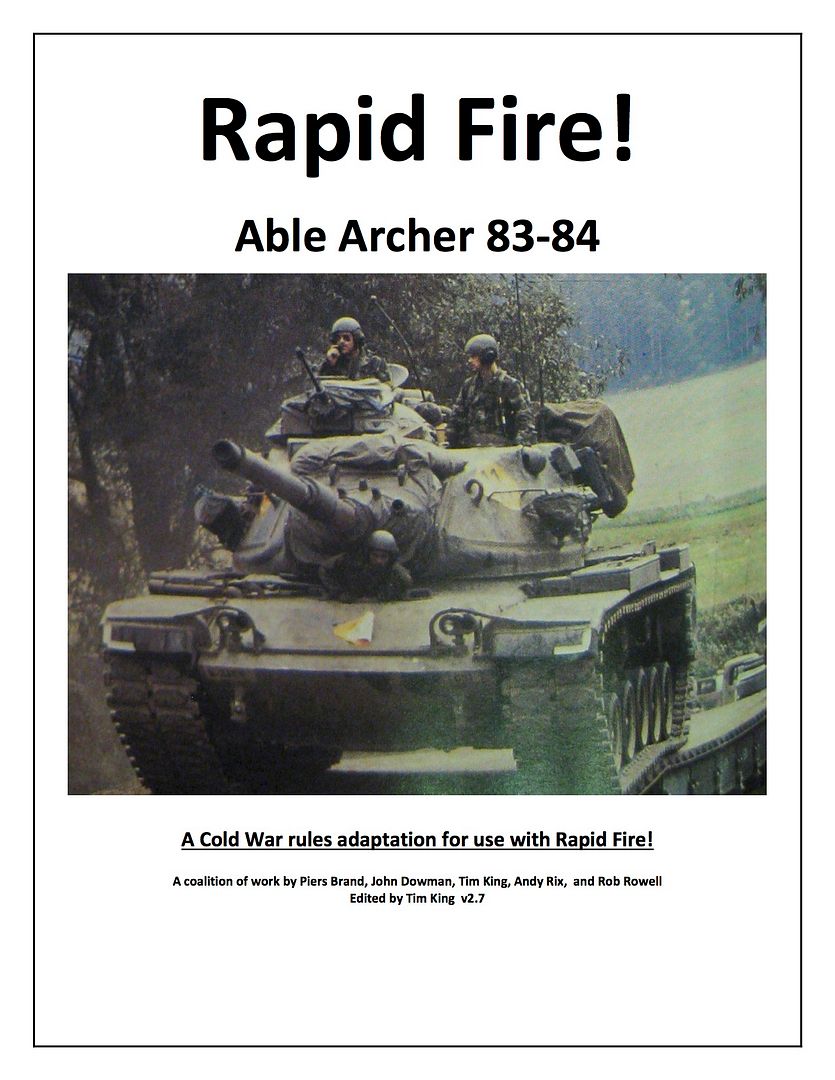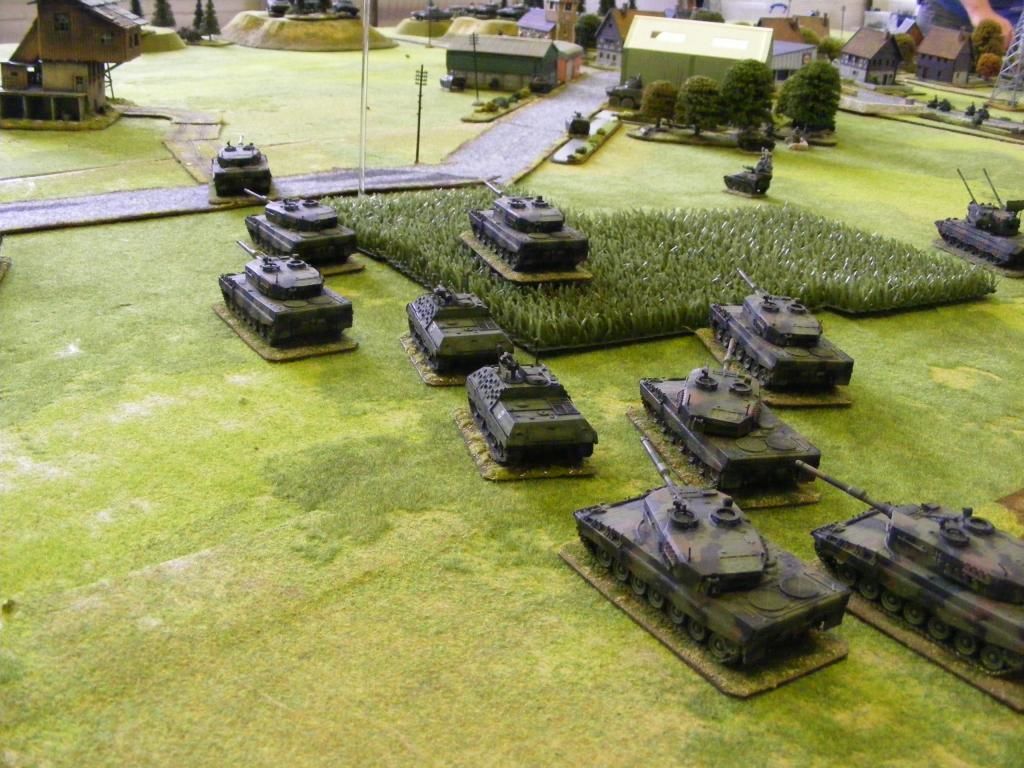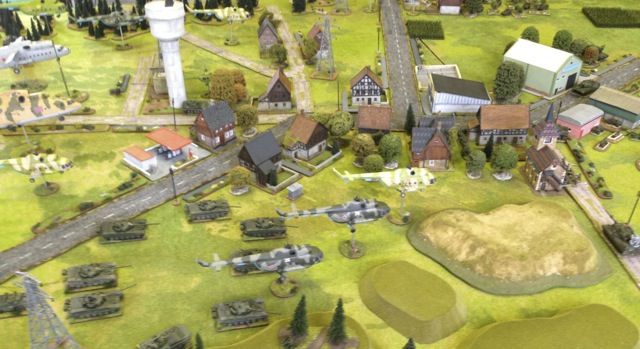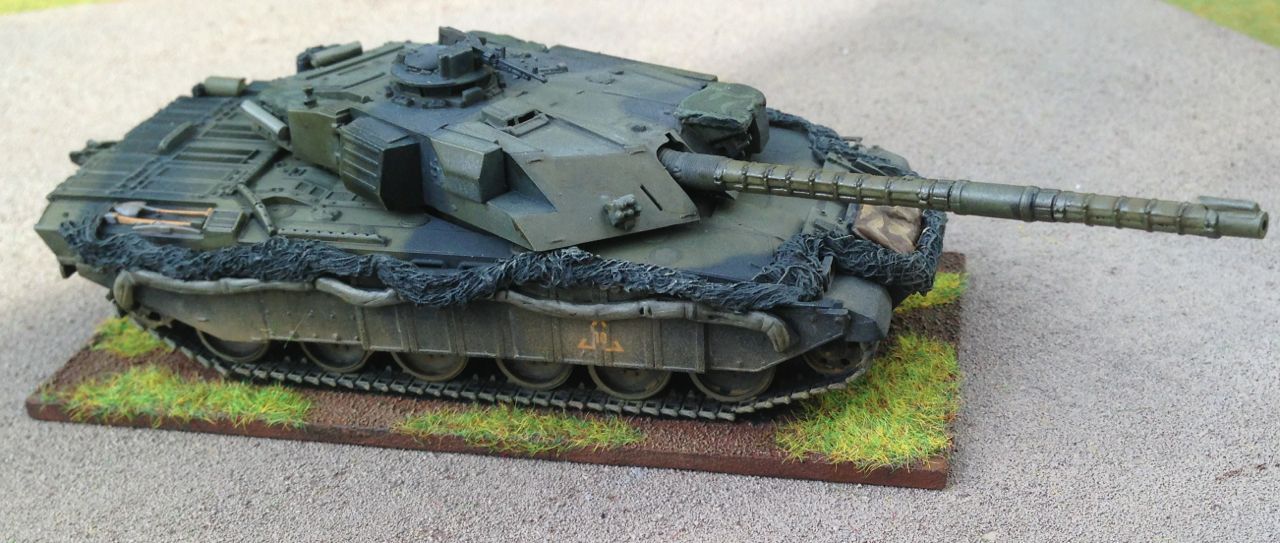As part of the Breakthrough battle the front could allocate elements of Frontal aviation in support of the depth fire battle enabling the simultaneous engagement of the enemy throughout his depth and to increase the effectiveness of the engagement of the enemy in the immediate combat zone.
Frontovaya Aviatsiya FA was the largest component of Soviet Air Power comprising some 5,000 aircraft and 5,000 helicopters distributed across 16 Air Armies. A Tactical Air Army was an integral part of a Front which for the purposes of my Cold War representation consisted of 2 Combined Arms Armies, 1 Tank Army and 1 Tactical Air Army.
Frontovaya Aviatsiya FA was the largest component of Soviet Air Power comprising some 5,000 aircraft and 5,000 helicopters distributed across 16 Air Armies. A Tactical Air Army was an integral part of a Front which for the purposes of my Cold War representation consisted of 2 Combined Arms Armies, 1 Tank Army and 1 Tactical Air Army.
The purpose of Frontal Aviation was to provide Air Support to the front throughout the fronts area of operations and the enemies depth this area can be described as a box approximately 300km wide to 500km deep. In addition to the ability to deliver Air to Ground attack from Aircraft or Helicopters, the Air Army also possessed Reconnaissance, Electronic Warfare, Air Superiority and Transport Assets.
The Primary role was Air Support to the Ground Operation with the Tactical Air Army being subordinate to the Front, the other assets within the Air Army, Fighter Divisions and Reconnaissance Regiments, being used to create the conditions under which this could occur. The principal uses of the Air Armys assets were:
The Primary role was Air Support to the Ground Operation with the Tactical Air Army being subordinate to the Front, the other assets within the Air Army, Fighter Divisions and Reconnaissance Regiments, being used to create the conditions under which this could occur. The principal uses of the Air Armys assets were:
- Striking targets beyond the range of Artillery
- Increasing tempo by adding air delivered ordnance to direct and indirect fires
- adding flexibility through quick response in fluid tactical situations
Composition, Organisation and Equipment
The Various Air Armies composition varied depending on where they were. Based on Suverovs model of the Front and his view on the force composition and structure in the Forward Group of Forces then 16 Air Army would split into two with one supporting each of the two fronts.
An outline composition for an Air Army supporting a single front could look like this:
- 3 Fighter Divisions ( IAD )Mig-23 Flogger, Mig-29 Fulcrum (90% of the Force),
- 2 Fighter Bomber Divisions (IBAP) Mig 27D Flogger (60%), Su-17 Fitter (40%)
- 1 Independent Air Attack Regiment (OShAP) SU-25 Frogfoot
- 1 Bomber Division (ADIB) Su -24 Fencer
- 3 Attack Helicopter Regiments (OBVP) Mi 24 Hind. Mi-8 Hip
- 1 Fighter Recce Regiment (ORAP) Mig-25R Foxbat, Mig-25BM (ECM) Su-17M4R, Su 24 MR, Su-24MP
- 1 Helicopter Transport Regiment (OVP) Mi-24, Mi8, Mi-6
- 1 Mixed Helicopter Regiment (OVP) Mi-8, Mi-6/26
Aircraft are organised in flights of 4 with 3 Flights to a Squadron (12) and 3 Squadrons to a Regiment (36) and 3 Regiments to a division (108). There was some mixing of aircraft types within Squadrons and regiments but in general a regiment tended to operate aircraft of a single type for fighter, Fighter Bomber. The range of aircraft covers the types that could have been used against the role stated at the back end of the Cold War.
Like Artillery covered in the last Post on Breakthrough operations the great thing about Aircraft is that they are very easy to concentrate on an axis or in support of a mission and can add considerable weight of fire at critical moments in the battle.
Like Artillery covered in the last Post on Breakthrough operations the great thing about Aircraft is that they are very easy to concentrate on an axis or in support of a mission and can add considerable weight of fire at critical moments in the battle.
weapon systems
A wide range of air to ground munitions were available to fighter ground attack aircraft in the late 80's. Like NATO the Soviets had been improving the effectiveness of aerial delivered munitions through both precision guidance from the air, precision guidance from the ground and the development of a range of Scatterable mine and submunition capabilities.
The critical developments from the perspective of Breakthrough were those that could be used to break down a formed defence and could be used to replace the dependence on Nuclear weapons seen in the 60’s. To my mind this puts the focus on the improvement of bombs rather than in developments of Surface to air missiles which because of cost and availability would tend to be used on higher value targets.
The critical developments from the perspective of Breakthrough were those that could be used to break down a formed defence and could be used to replace the dependence on Nuclear weapons seen in the 60’s. To my mind this puts the focus on the improvement of bombs rather than in developments of Surface to air missiles which because of cost and availability would tend to be used on higher value targets.
Guided Bombs
The Soviets developed a range of precision guided munitions in the late 70s and by 1979 had deployed a number of 500kg Laser Guided Bombs these included Bunker Busters, HE-Frag and Thermobaric munitions. These systems were used in Afghanistan and by 1987 they had up scaled these to include 1500kg bombs.
Collectively known as KAB (Korrektirujemaja Aviacionnaja Bomba) the weapons have a significant stand off range. The KAB-500 series having a maximum range of 10 km and can be delivered by MiG-27K, Su-22M3/M4, Su-24M and Su-25. The KAB – 1500 series can be from altitudes of 1 km to 15 km providing a maximum standoff of 18 - 20 km from the higher altitudes with the delivery platforms being primarily the Su 24 during the Cold War.
Collectively known as KAB (Korrektirujemaja Aviacionnaja Bomba) the weapons have a significant stand off range. The KAB-500 series having a maximum range of 10 km and can be delivered by MiG-27K, Su-22M3/M4, Su-24M and Su-25. The KAB – 1500 series can be from altitudes of 1 km to 15 km providing a maximum standoff of 18 - 20 km from the higher altitudes with the delivery platforms being primarily the Su 24 during the Cold War.
- KAB-1500L-Pr-E Penetrating bunker buster with sub calibre war head
- KAB-1500L-F-E Blast Fragmentation warhead
- KAB-1500-OD-E Thermobaric warhead
The LGB - KAB 500 L was deployed from 1979 and the KAB 1500 L from 1987 the weapons used a semi active homer which delivered a 7m CEP they were Air Designated and I have found no reference to ground designation. The improved LG variants were not delivered until after the end of the Cold War.
The 4.5m long KAB-1500L guided bomb is a bit of a beast designed to hit stationary ground and surface targets, these include:
The 4.5m long KAB-1500L guided bomb is a bit of a beast designed to hit stationary ground and surface targets, these include:
- Railway and Motorway Bridges
- Dams
- Defence Enterprise
- Large Ammunition Depots
- Fuel and Lubricant Storage
- Railway Junctions
In my mind it would also be a useful weapon to deploy against static battlefield targets such as defended positions and as such offers the potential to deliver Nuclear like effects from a more conventional platform.
The TV Guided KAB 500 KR and KAB 1500TK entered service from 1987 and delivered an improved 4m CEP. The Satellite guided systems were not deployed until 2003 so more Bear Resurgent than Cold War. The SU 24 cleared for 3 KAB 1500 or 7 KAB 500 with the Su 17 capable of carrying 2 KAB 500
Cluster Bombs
The other set of weapons of interest in the Breakthrough context are Cluster Bombs. Cluster munitions release or eject smaller submunitions and were deployed extensively by all sides during the Cold War, primarily they increased the area of effect of the payload and more efficiently distribute the effects within that area than a single equivalent sized bomb can achieve. As such they are more efficient at engaging area targets. The Soviet Union was a pioneer in the development of the Cluster bomb with use from the 1930's, The principal family of munitions available to them in the Cold War was the RBK 250 family of bombs. Sub Munitions carried include:
- Anti Personnel AO 2.5RT 2.8Kg Pre fragmented, designed to split on impact bounce then explode.
- Anti Personnel AO-1 SCh,
- Anti Personnel PFM-1 2.5 lbs, AP Mine
- Anti Tank PTAB 2.5, 5lbs Heat
- Airfield Cratering
The RBK Razovaya Bombovaya Kasseta is a single use bomb cassette which could then be loaded with a number of sub munitions generally either the fragmentation or Anti Tank sub munitions.
In the 1990s details of a larger and improved RBK 500 bomb were released with new sub munitions its not clear if these were available in the later years of the Cold War. But if like me you stretch the back end of the Cold War though to 1993 when the Soviets withdrew from Germany then they fit. New sub munitions included:
- AO-2.5 RTM pre fragmented anti personel/anti materiel
- BETAB airfield Cratering cluster bomb
- PTAB-1M anti tank, 2lbs Heat penetrates 9" of steel fin stabilised
- SPBE anti tank, 30 lbs anti tank with EFP warhead, Drouge stabilised
- SPBE-D anti tank
The munitions can be carried by Mig 23/27, 29, Su 17, 24, 25, 27
Command and Control
The Soviet system to control air assets in the fronts area of operations occurred at two levels. The first of these dealt with the routing of aircraft to and from their missions and the second the allocation of assets to missions and the prosecution and selection of targets.
The Control and Target Identification post was equipped with Radar and signals equipment and communicated with the air assets to control their movement, it was primarily a battlefield air traffic control system which had no role in mission planning.
The forward air liaison teams deployed to the forward CPs at each level of command from front to regiment and occasional battalion dealt with the target selection and prosecution of engagements. The Air assets like artillery assets could be allocated in support of specific formations and units and I suspect it is these units that received the Forward Air Liaison teams. Targeting like artillery would be conducted through the direction of assets by the controlling HQ ie the combined arms commander in conjunction with the Liaison team, rather than by request.
The Air Controllers at Regimental level would clear targets and identify friendly troop locations for attacking aircraft, these air controllers were usually experienced Pilots, I have yet to find any evidence of ground target marking capability. All the teams would be equipped with either BTR Series or MT-LBu command and Observation post vehicles which were supplied to both artillery and air observation parties, the specific BTR 60 variant being the BTR 60R-975.
The forward air liaison teams deployed to the forward CPs at each level of command from front to regiment and occasional battalion dealt with the target selection and prosecution of engagements. The Air assets like artillery assets could be allocated in support of specific formations and units and I suspect it is these units that received the Forward Air Liaison teams. Targeting like artillery would be conducted through the direction of assets by the controlling HQ ie the combined arms commander in conjunction with the Liaison team, rather than by request.
The Air Controllers at Regimental level would clear targets and identify friendly troop locations for attacking aircraft, these air controllers were usually experienced Pilots, I have yet to find any evidence of ground target marking capability. All the teams would be equipped with either BTR Series or MT-LBu command and Observation post vehicles which were supplied to both artillery and air observation parties, the specific BTR 60 variant being the BTR 60R-975.
The Soviets tend to employ aircraft to engage deeper targets and aviation to attack closer targets all though assets of both types will be utilised for pre planned operations and air delivered fire strikes can be used to superimpose fire effect on top of artillery fires.
Modeling and Gaming
The purpose of the research was of course to enable me to expand the Soviet horde to include some air support that could help deliver some serious effects on to the NATO position in the event of a breakthrough battle developing on a table top near me. To this end I will be adding:
- 2 Su 17 representing two flights of 4 Su 17 equipped with Kab - 500L and CBUs from the IBAP
- 1 Su 24 representing 1 Flight of 4 Su 24 equiped with 2 Kab - 1500L and CBUs from the ADIB
- 1 BTR 60 Forward Air Control Command and Observation Post
Having spent the time researching the aircraft munitions it would be good to create models with the Weapon load outs required. Since I started writing this article back in 2014 a number of new weapons sets have been released along with a number of aftermarket resin accessories that enable that to be acheived the main ones I am using are:
- Hasegawa 1/72 Rusian Weapons Set
- Dragon Modern Soviet Aircraft Weapons Set1 Air to Air Missiles
- Dragon Modern Soviet Aircraft Weapons Set 2 Air to Surface Missiless
- Dragon Modern Soviet Aircraft Weapons Set 3 Rockets and Bombs
- ICM Soviet Air to Air Aircraft Armament Set
- ICM Soviet Air to Surface Aircraft Armament Set
- North Star, Kab 500L
For this project the main sets used are the Hasegawa Russia Weapons Set which supplied 2 Kab 1500Ls for the Su 24. The Dragon Modern Soviet Aircraft Weapons set 3, Rockets and Bombs which supplied the CBUs and the North Star Kab-500L set which supplied the load for the Su 17s.
when completed these birds will join my existing Frontal Aviation assets which include:
- 1 Mig 29 representing 1 flight of 4 aircraft from the IAD
- 1 Mig 23 representing 1 flight of 4 aircraft from the IAD
- 2 Su 25 representing 2 flights of 4 aircraft from the OShAP
- 2 Mig 27 representing 2 flights of 4 aircraft from the IBAP
- 5 Mi 24 representing an Attack Helicopter Sqn from the OBVP
- 5 Mi 8 representin an Assault Helicopter Sqn from the OBVP
- 4 Mi 8 representing a Medium Transport Helicopter Sqn from the OVP
- 2 Mi 24 and 1 Mi 6 representing a Heavy Transport Helicopter Sqn from the OVP
key elements of the Air Armies together with the DsHV and a range of Engineer capabilities were amongst those hit by the change to a more defensive doctrine in the late 80's as Glasnost and perestroika started to bite. I generally view this as a politically instigated doctrinal change motivated by the changing political landscape that evolved in the closing moments of the Cold War, in a timeline that would have led to war these changes may well have not occurred, it is also worth remembering that up scaling aircraft assets can be relatively easy given that the ground support and logistic elements can accommodate it. Which I suppose is my justification for playing late Cold War scenarios using assets such as those described in this post.
References:
Books
Books
Air Power Australia - Soviet Air to Ground Guided Bombs
Wiki Scramble Soviet Air Force Unit Abbreviations
Mig -27
Su-24 @ airforce world
Su-24 @ airvectors
16 Air Army
Su 27 Armaments Latvia Air Bases
Related Posts
ORBAT-Soviet Late 80's Breakthrough Capability, Part 3 Non Divisional Artillery Assets
Wargames Unit - Soviet Late 80's, Flame Thrower Company Group
Wiki Scramble Soviet Air Force Unit Abbreviations
Mig -27
Su-24 @ airforce world
Su-24 @ airvectors
16 Air Army
Su 27 Armaments Latvia Air Bases
Related Posts
ORBAT-Soviet Late 80's Breakthrough Capability, Part 3 Non Divisional Artillery Assets
Wargames Unit - Soviet Late 80's, Flame Thrower Company Group

